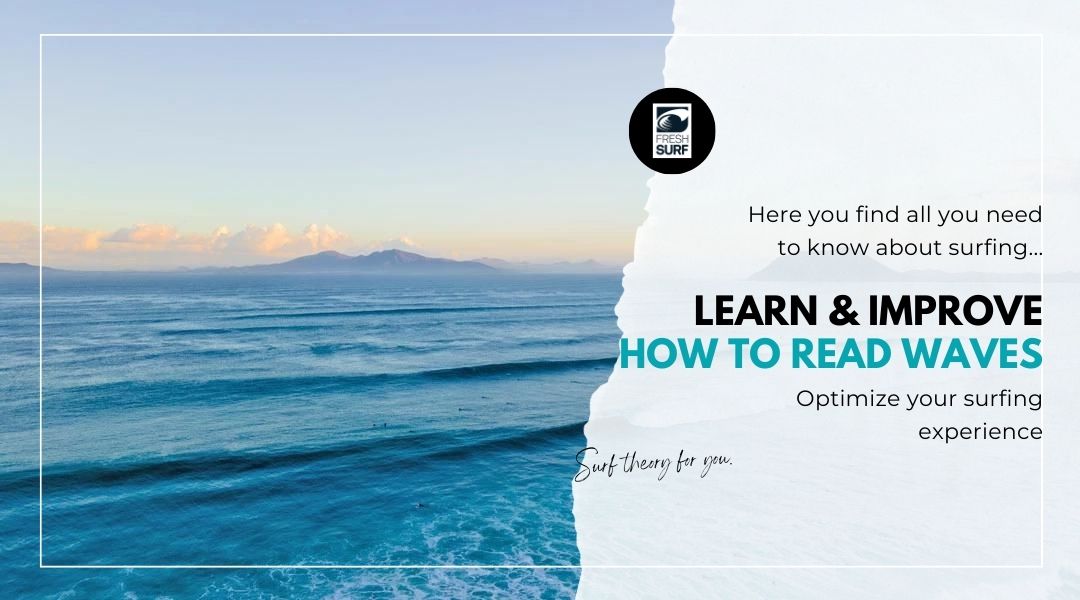
Being able to read waves is an important ability of surfers to find the best waves and optimize their surf experience.
Introduction to reading waves
The ability to read waves is an important ability of surfers to find the best waves and optimize their surf experience. It not only enables you to better assess the quality and speed of the waves, but also to better evaluate their potential. Understanding the waves also fosters a deeper connection to nature and the ocean.


Surfers, no matter what surf level they have, who master the art of reading the waves, can read the movements of the ocean like a book. Like that they can adjust their surfing accordingly to enjoy a more intense experience of nature.
The ability to read waves is more than just a technical ability and enables surfers to understand and appreciate waves as a part of a bigger ecosystem.

To read waves effectively, it is crucial to consider the various factors that can influence wave formation. These include:
- tides
- direction of the wind
- nature of the seabed
- Topography of the surroundings and
- Swell direction and size
Experienced surfers will use all these informations to find the best waves and position themselves clever in the water. By continuously improving their wave reading skills, surfers can not only better achieve their surfing goals, but also refine their surfing technique and constantly develop.
For example, wave reading trains the ability to distinguish between different types of waves and choose the ones that best suit your skills and preferences. We will go into this in more detail below.
Techniques to read waves
We’ve put together some good tips on wave reading to help you catch even more waves in the future.
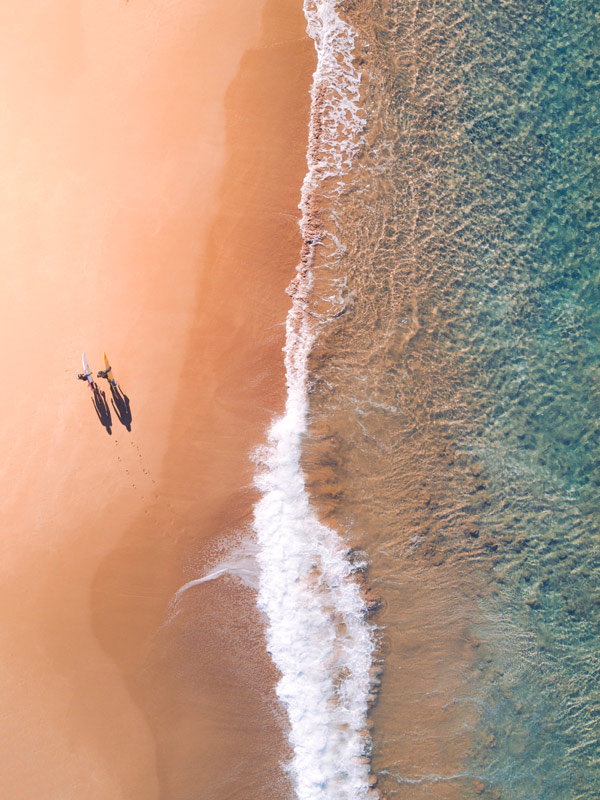
Use the surface of the water as indicator
You can use the reflection and refraction of light on the surface of the water to read the waves. This visual perception allows you to interpret the shape, size and speed of the waves. This allows you to recognize from the wave line whether it is a wave breaking to the right or left, an A-frame or a close-out breaking wave.
When you arrive at a surf spot for the first time, take the time to observe the sea. See if the waves break smoothly or if there are any irregularities. Smooth, shiny crests indicate gently breaking waves, while irregular or broken surfaces may indicate obstacles or shallower sections of the seabed.
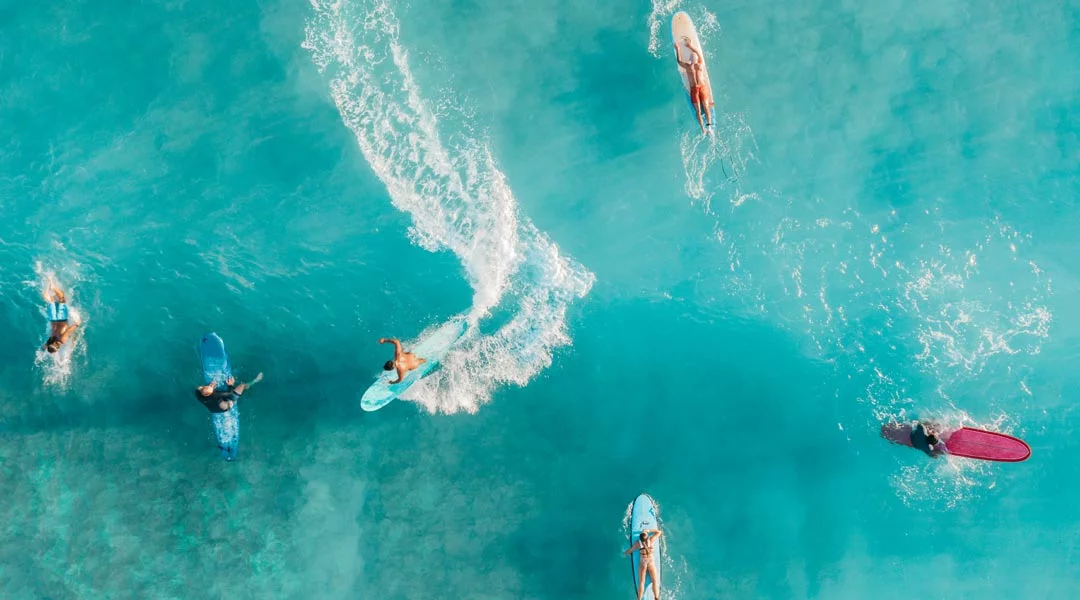
Observe other surfers and learn from them!
You can also benefit from observing the behavior of other surfers. By paying attention to how other surfers paddle and ride waves in this way, you can gain valuable insights into where the best sections of the line-up are located. Based on the behavior of other surfers, you can better analyze currents or reef structures and look for the best place to position yourself in the lineup.
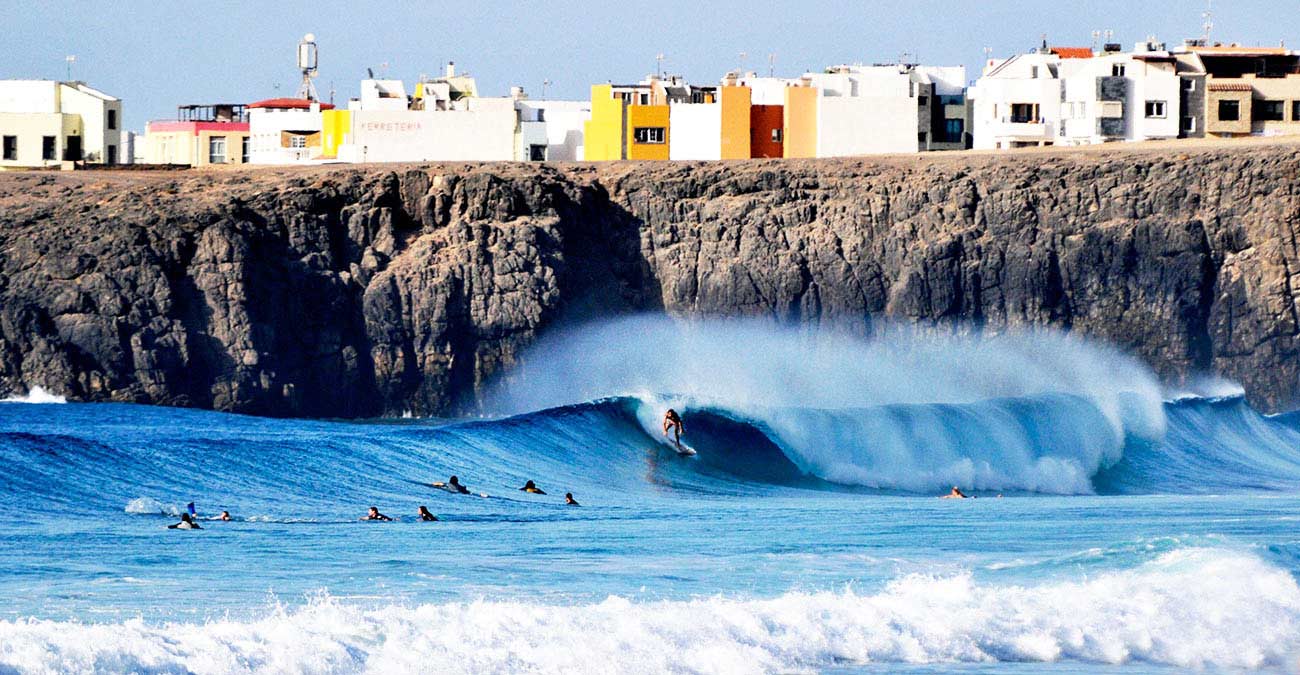
Understand the seabed and you will understand the waves!
A deep understanding of the topography of the seabed is crucial to refining your reading techniques. If you know the nature of the underwater world, you can make predictions about how waves break and form.
For example, the way reefs and sandbanks break differs in that with reefs you can expect a constant break at a particular location, whereas with sandbanks it can always shift a little bit at any time.
How to find the best waves
The ability to find the best waves to surf is an essential part of a successful and fulfilling surfing experience. There are several factors you should pay attention to in order to identify optimal conditions.
How to read the surf forecast correctly!
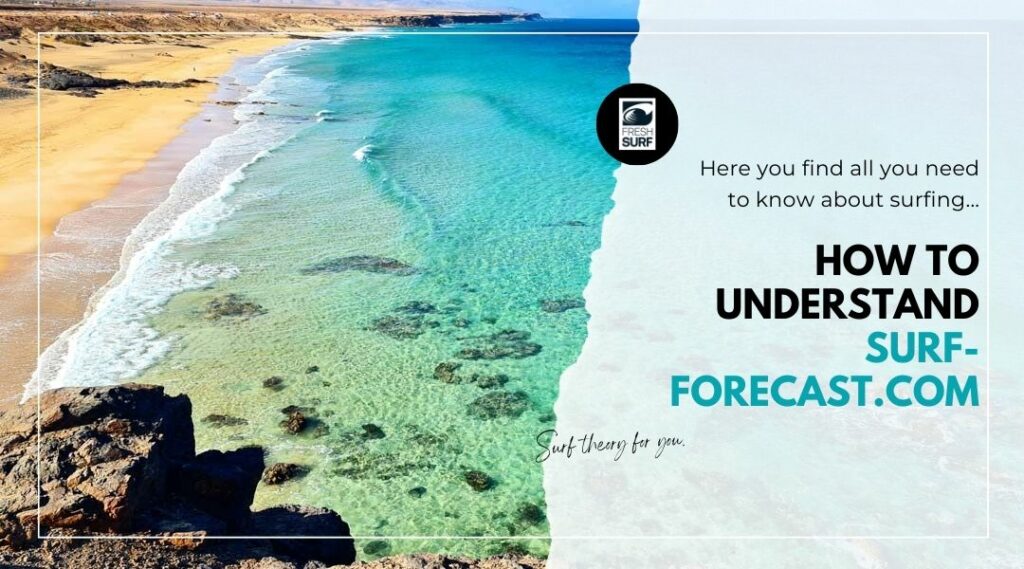
Wave predictions – learn how to interpret them correctly
In addition to observing wind direction and tides, swells also play a crucial role. Swells are the long, continuous wave movements that transport energy over long distances and have a significant influence on wave quality.
Surfers who are able to analyze the swells can select the best waves for their ability and preferences.

The different types of waves
Waves are not just water movements, they also carry the characteristics of the surf spots where they occur. Understanding the differences between point breaks and beach breaks, as well as other wave types, allows surfers to refine their surfing technique, develop their skills and adapt to different surfing conditions, making their surfing experience more versatile and exciting.
Pointbreaks, for example, are known for their consistent and long waves. These usually break laterally on landmarks or reefs, giving surfers the opportunity to enjoy long rides and turns.
A famous example of a point break is Jeffrey’s Bay in South Africa, where surfers rave about the perfect waves that unfold along the coastline and are known worldwide for their consistency. Surfers who surf at point breaks have the advantage of being able to predict the wave shape and speed, which enriches their surfing experience and improves their skills.
In contrast, beach breaks are notorious for their versatility and unpredictability. These waves break over sandy seabeds and can be unpredictable depending on tides, sandbanks or weather conditions. A well-known beach break is Hossegor in France, for example, which is known for its powerful but also hectic waves. Surfers who master beach breaks need to be flexible and able to adapt quickly to changing conditions. This trains their responsiveness and timing.
The correct behavior at the peak – if you have read the wave correctly
When surfing, making the right decision at the peak about wave selection is of great importance. Here are some tips to better assess waves:
- Watch the horizon to recognize upcoming waves and identify the peak where the wave will break.
- Determine the direction in which the wave will break and let close-out waves pass.
- Paddle actively to the peak to reach the wave before it breaks, but be careful not to steal the wave from other surfers.
- Look for a shallower angle to find faster waves, but avoid letting the wave break on you.
- Good observation, patience and practice are crucial for successful surfing. Choosing the right waves will help you have more fun and improve your skills.
- Always adhere to surf etiquette. This shows respect for your fellow surfers and ensures you behave correctly in the water.
Correct positioning before take-off
In the following video you will learn how you should position and behave before your take-off at the peak to be able to increase your “wave count” once again:
Influence of wave reading on the surfing experience
Remember: a surfer who can read waves well is better able to choose the right waves. This means that you can identify waves that give you the riding experience you want, be it long, well-formed waves for tricks and turns or steeper, faster waves for more adrenaline and speed.

Personal development included!
By continuously improving your wave reading skills, you can not only achieve your surfing goals better and choose the right waves for you, but also develop personally. Constantly engaging with the waves and the sea not only improves your physical fitness and responsiveness, but also your mental strength and stamina.
Surfing requires concentration, patience and a certain humility in the face of nature – qualities that are encouraged and strengthened through wave reading.
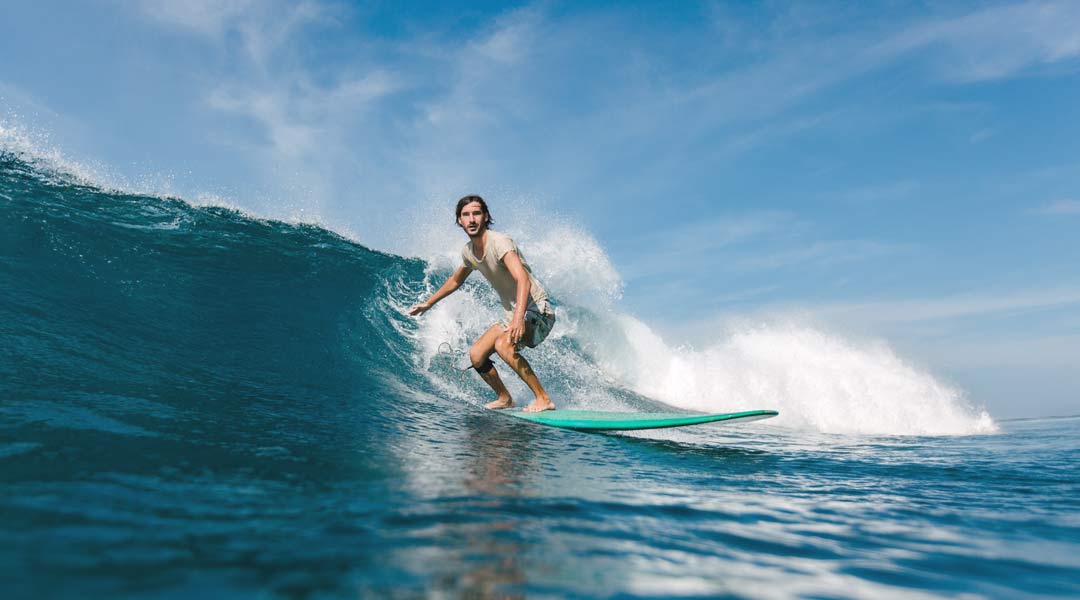
Connect with nature!
The art of wave reading goes beyond the purely technical ability to find the best waves.
It allows surfers to establish a deeper connection with the ocean and develop a deeper understanding of nature.
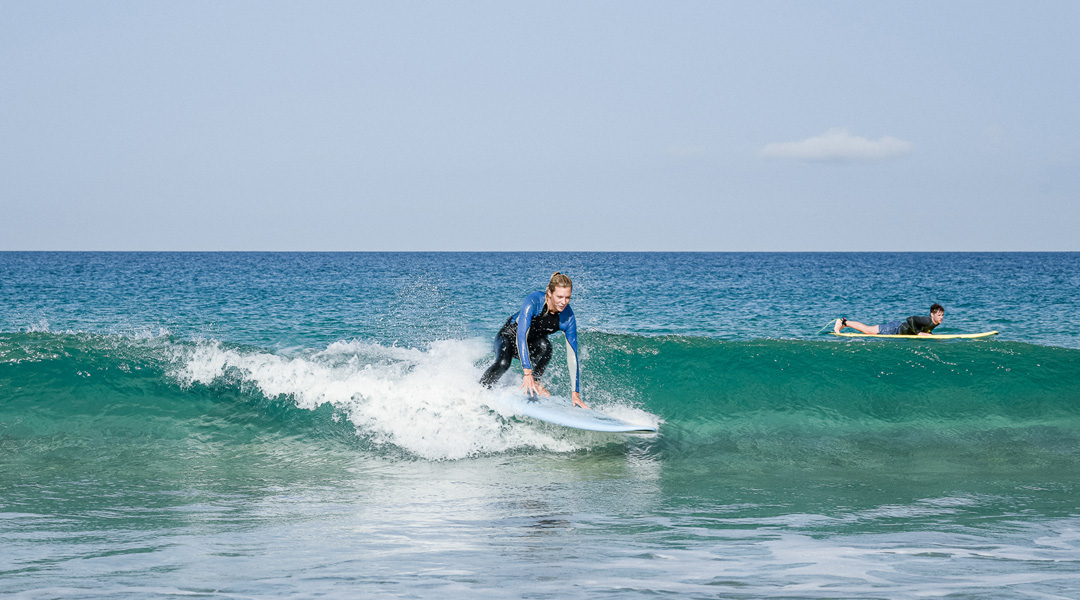
Become more sensitive to nature!
If you learn to read waves, you may also become more sensitive to the movements of the sea and feel the energy of the ocean in a whole new way. This connection with nature can significantly enrich the surfing experience and lead to an intense experience of nature that goes beyond simply riding waves.
“Surfing is about reading the waves and the wind and applying the right knowledge and experience to tame the power of the ocean.”
– Gerry Lopez –
